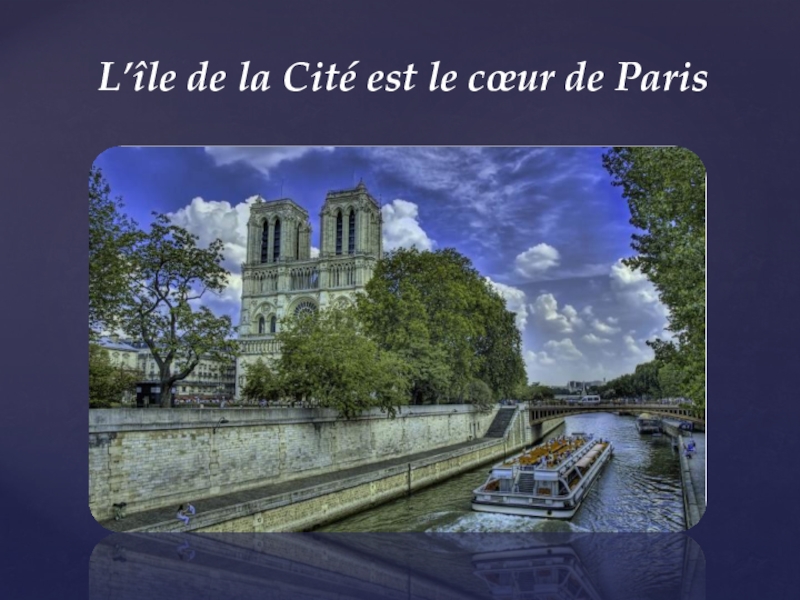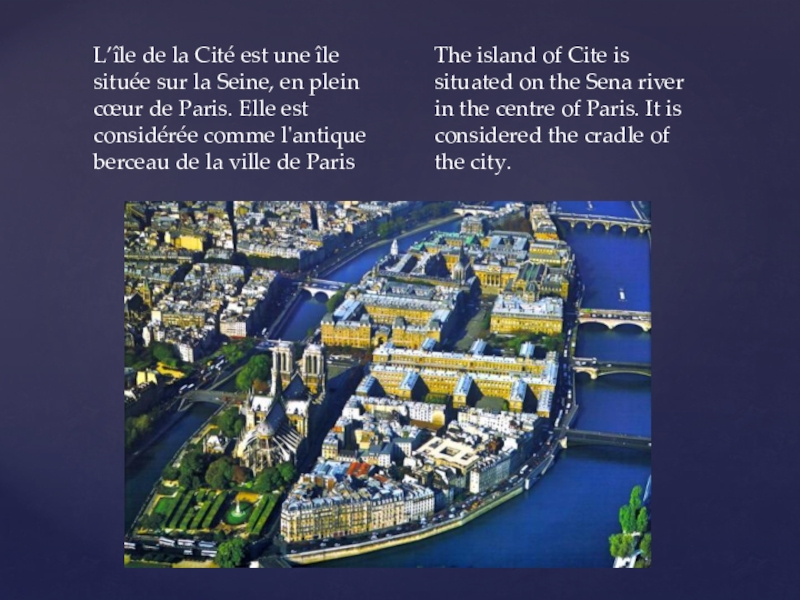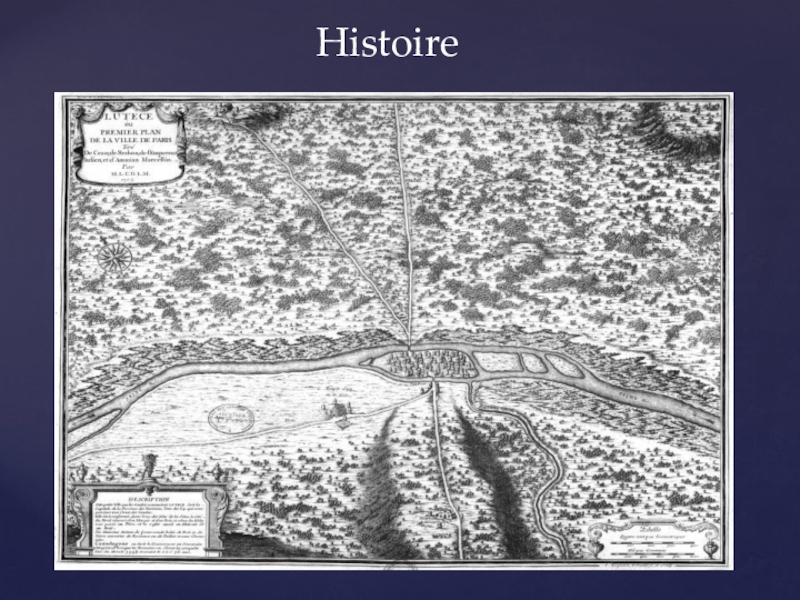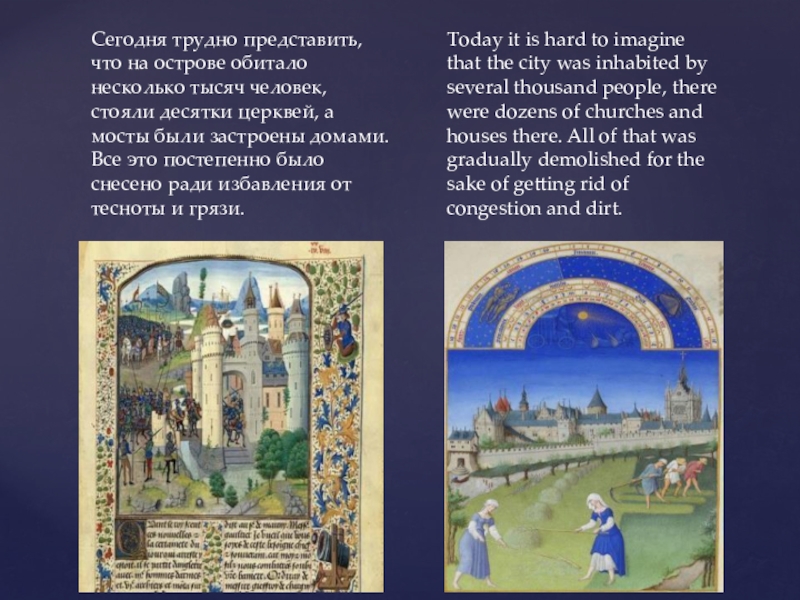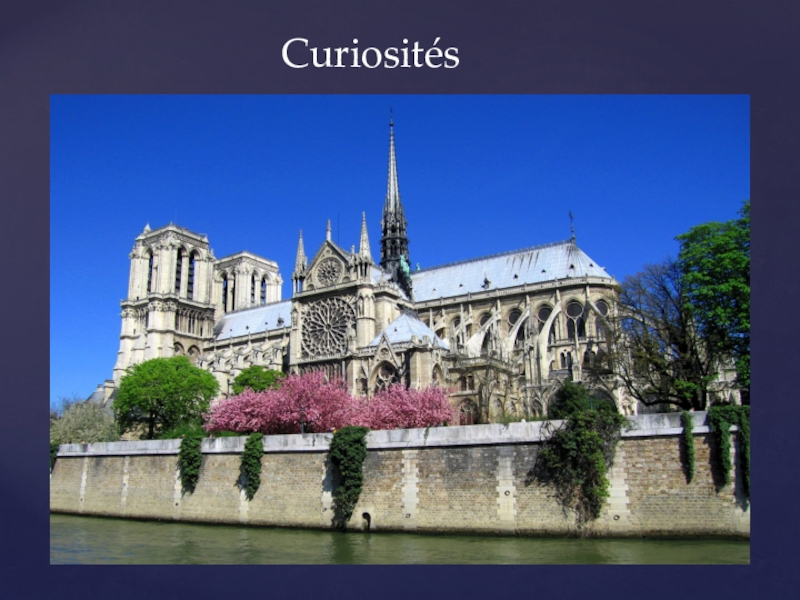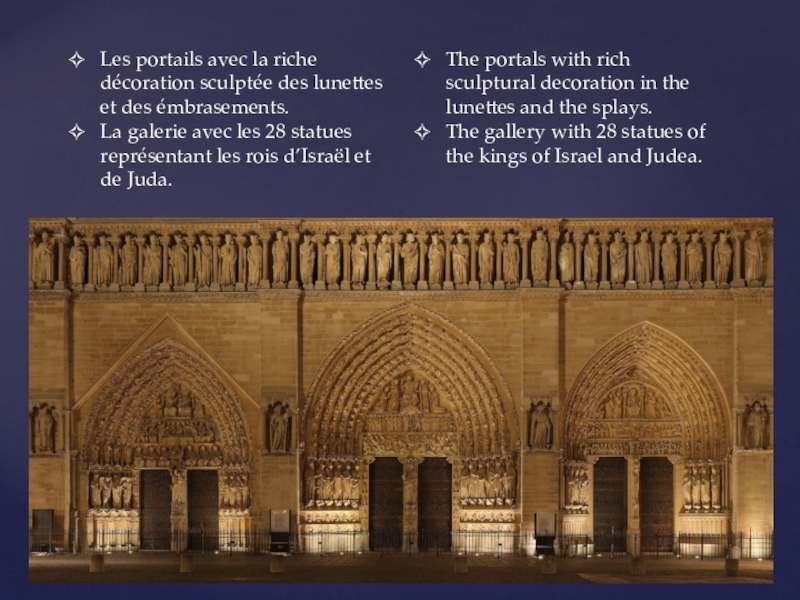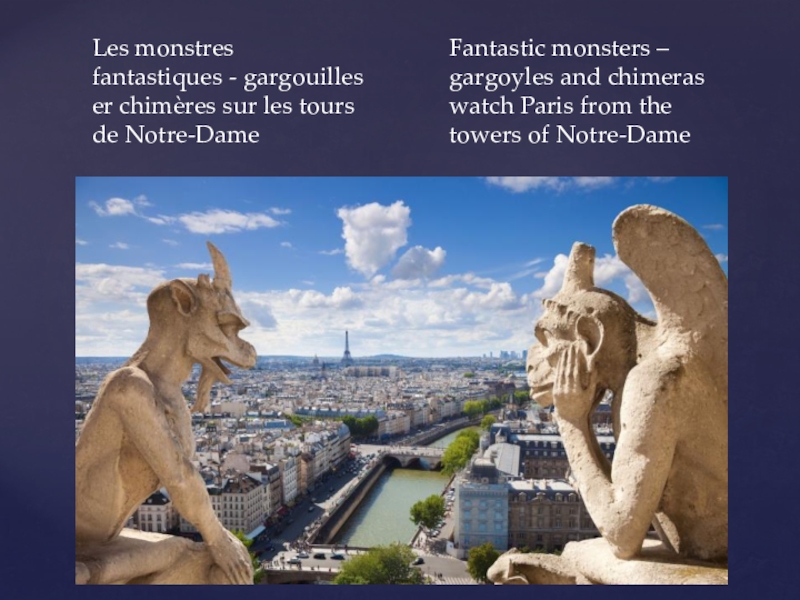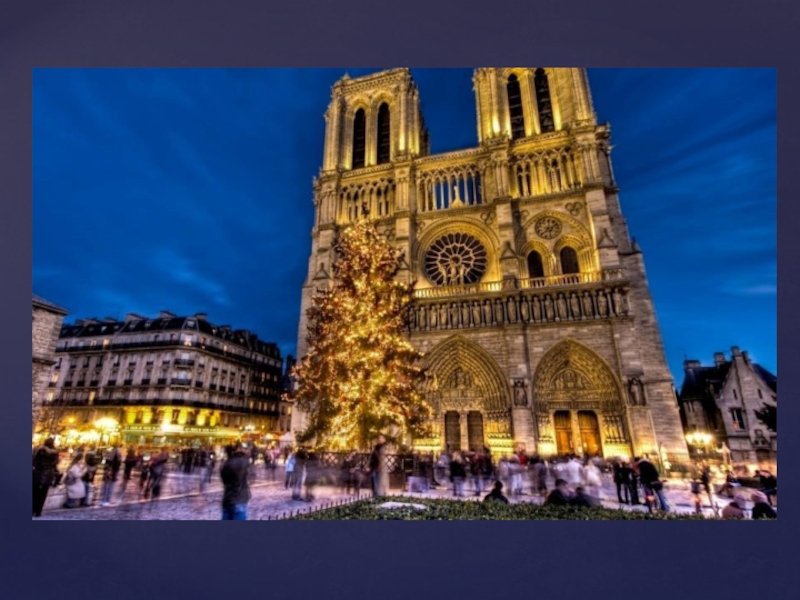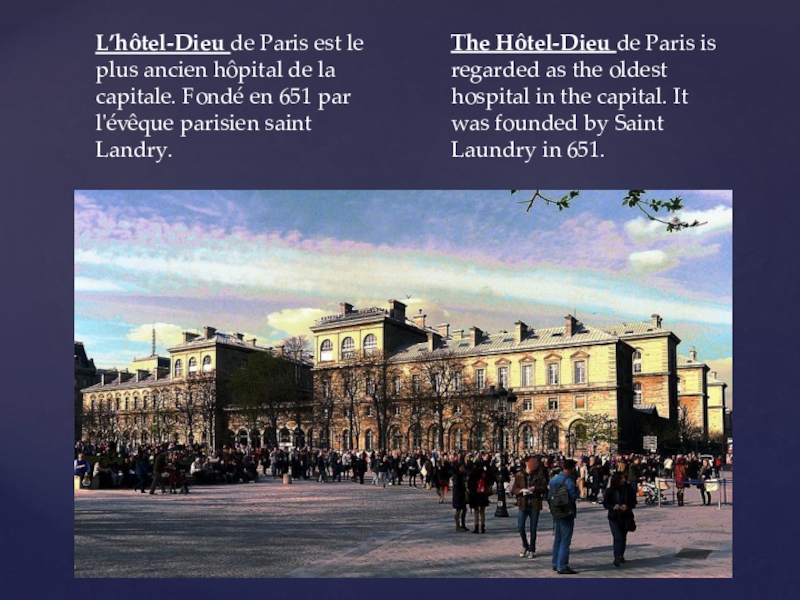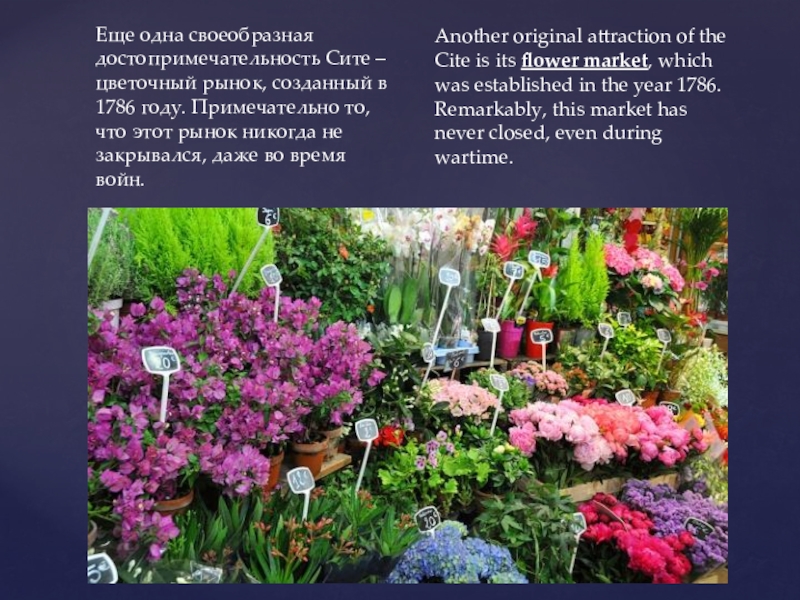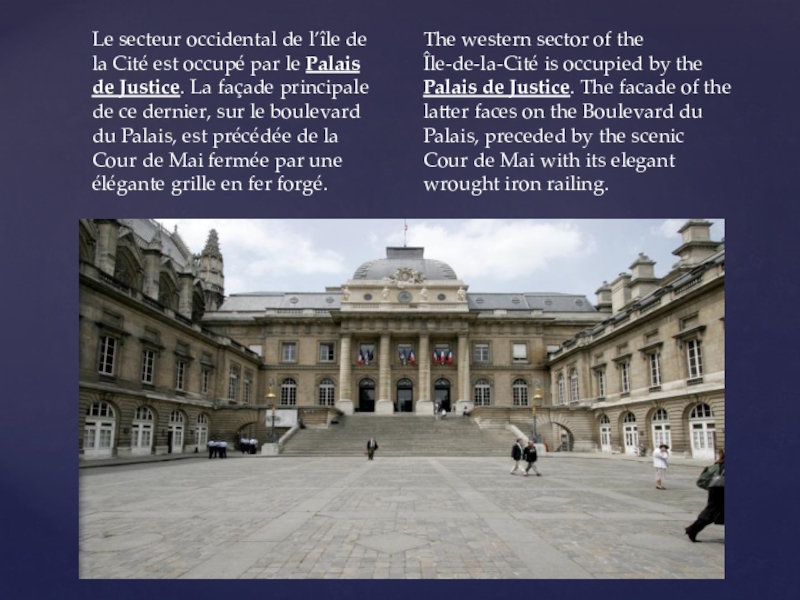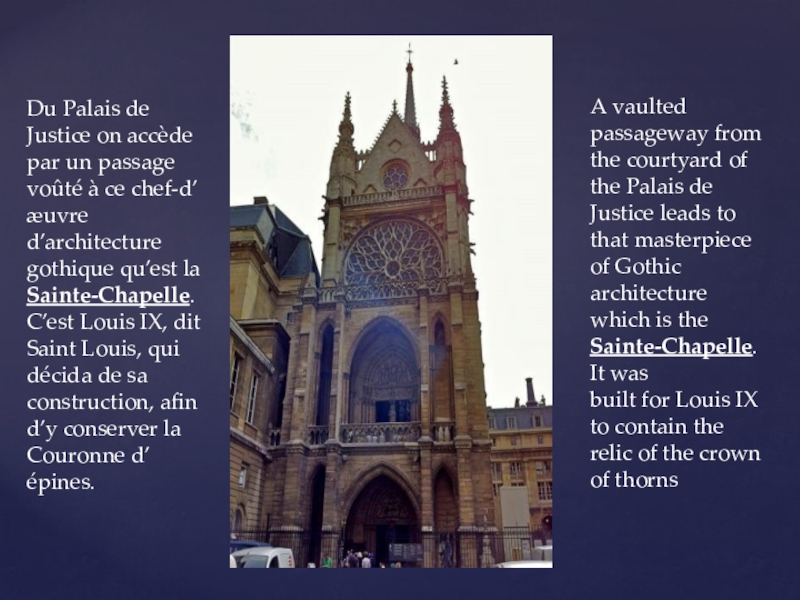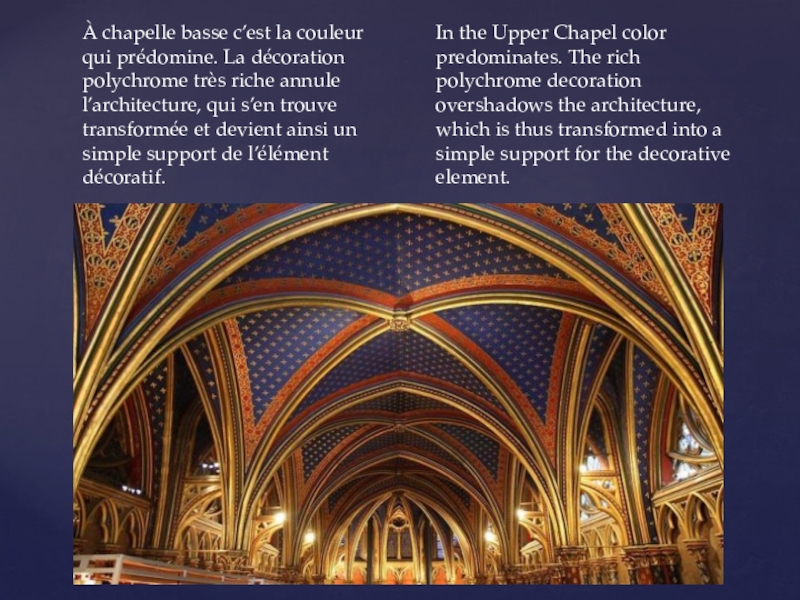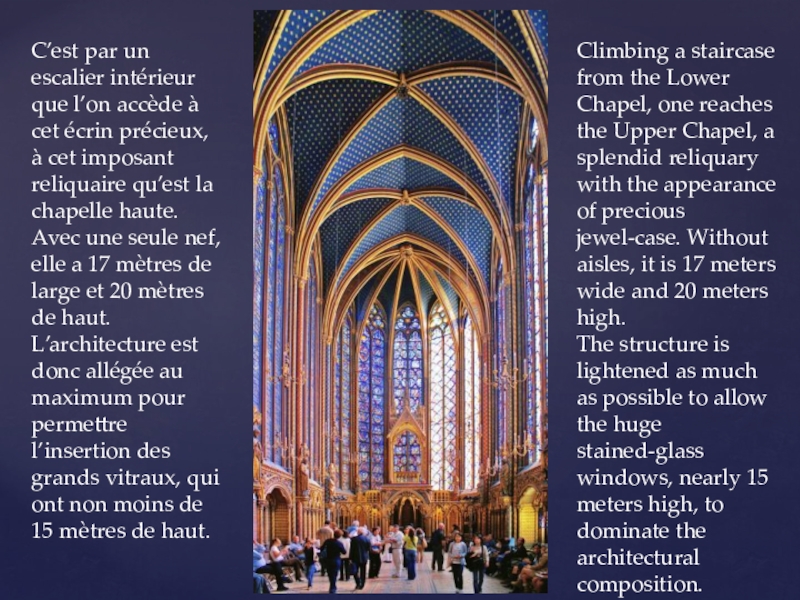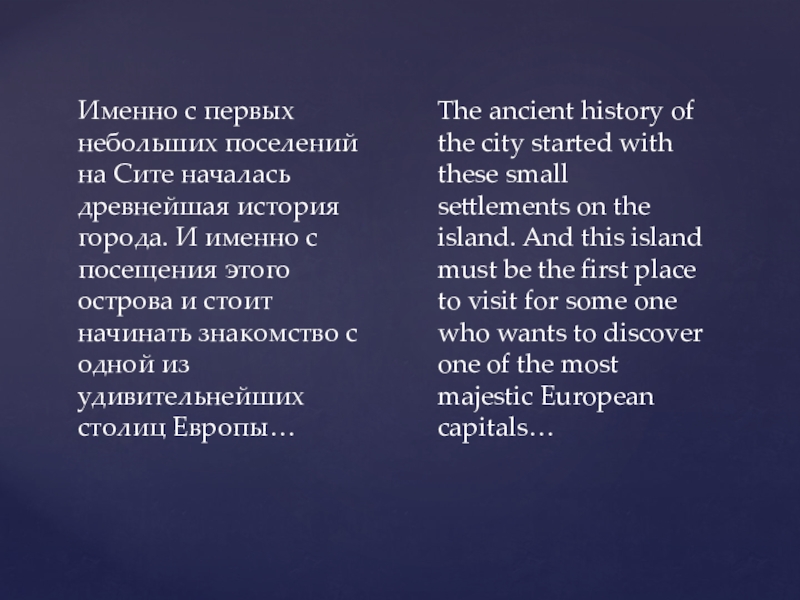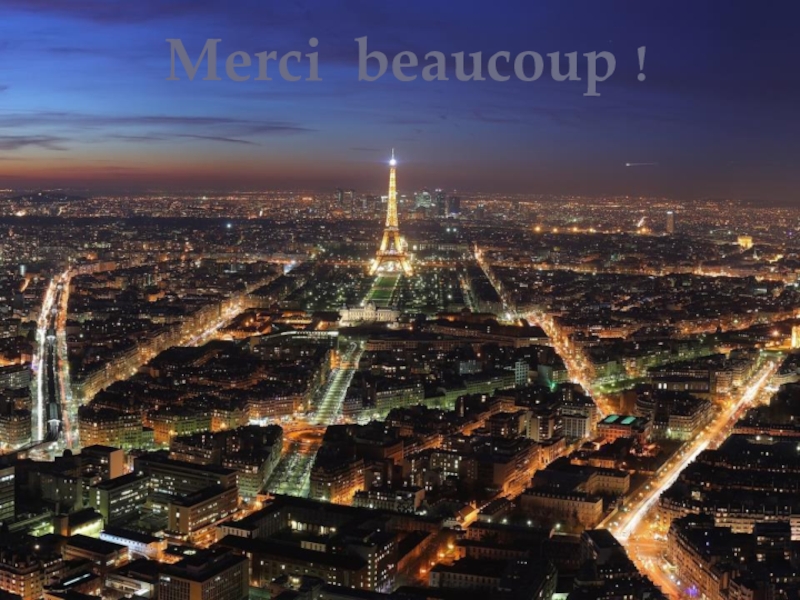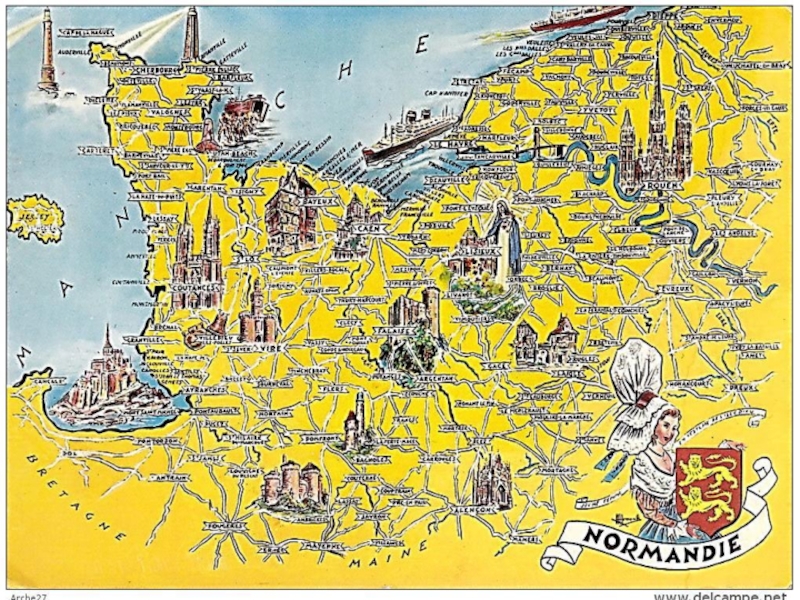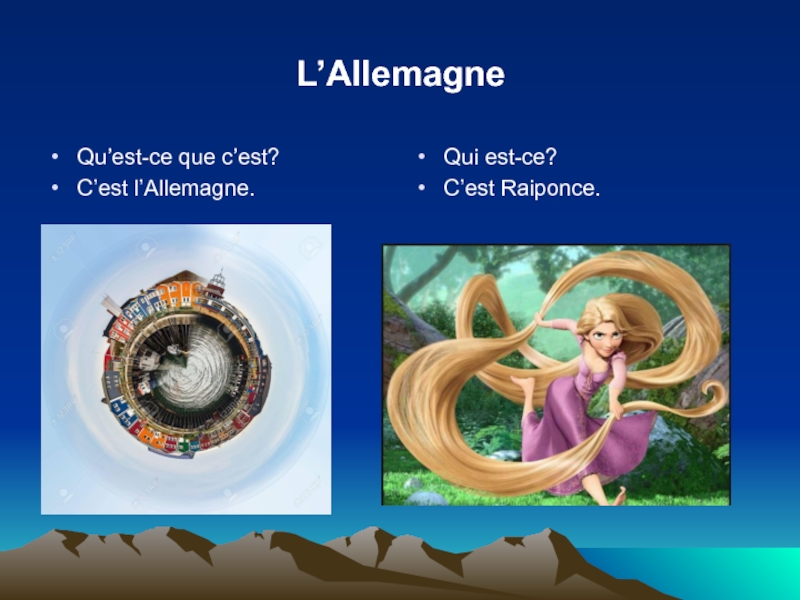- Главная
- Разное
- Образование
- Спорт
- Естествознание
- Природоведение
- Религиоведение
- Французский язык
- Черчение
- Английский язык
- Астрономия
- Алгебра
- Биология
- География
- Геометрия
- Детские презентации
- Информатика
- История
- Литература
- Математика
- Музыка
- МХК
- Немецкий язык
- ОБЖ
- Обществознание
- Окружающий мир
- Педагогика
- Русский язык
- Технология
- Физика
- Философия
- Химия
- Шаблоны, фоны, картинки для презентаций
- Экология
- Экономика
Презентация, доклад на тему Урок по страноведению по французскому языку L'ile de la Cite
Содержание
- 1. Урок по страноведению по французскому языку L'ile de la Cite
- 2. L’île de la Cité est une île
- 3. HistoireUne petite tribu gauloise nommée les Parisii
- 4. Cегодня трудно представить, что на острове обитало
- 5. Curiosités La splendide et austère église
- 6. Les portails avec la riche décoration sculptée
- 7. À peine entrés dans la cathédrale, on
- 8. Les monstres fantastiques - gargouilles er chimères
- 9. Слайд 9
- 10. L’hôtel-Dieu de Paris est le plus ancien
- 11. Еще одна своеобразная достопримечательность Сите – цветочный
- 12. Слайд 12
- 13. Le secteur occidental de l’île de la
- 14. Du Palais de Justice on accède par
- 15. À chapelle basse c’est la couleur qui
- 16. C’est par un escalier intérieur que l’on
- 17. Именно с первых небольших поселений на Сите
- 18. Merci beaucoup !
Слайд 2L’île de la Cité est une île située sur la Seine,
The island of Cite is situated on the Sena river in the centre of Paris. It is considered the cradle of the city.
Слайд 3Histoire
Une petite tribu gauloise nommée les Parisii y vivait depuis 250
En 52 av. J.-C., après la victoire de Jules César, on assista à la naissance de Lutèce. Les Gaulois s'installèrent sur l'île, tandis que la ville gallo-romaine se construisait sur la rive gauche.
A small Celtic tribe, the Parisii, lived on the island 250 B.C.
In the year 52 B.C., after Julius Cesar's victory, we became witnesses of the birth of Lutecia. Gauls settled on the island, while a Gallic-roman city was built on the left bank.
Слайд 4
Cегодня трудно представить, что на острове обитало несколько тысяч человек, стояли
Today it is hard to imagine that the city was inhabited by several thousand people, there were dozens of churches and houses there. All of that was gradually demolished for the sake of getting rid of congestion and dirt.
Слайд 5Curiosités
La splendide et austère église Notre-Dame domine l’île de
The splendid, stern cathedral of Notre-Dame dominates Île de la Cité, reflecting in the waters of the Seine. The church was begun in 1163 under Bishop Maurice de Sully and was finished only in 1345. Imposing and majestic in its stylistic and formal consistency the facade of Notre-Dame is divided by pilasters into 3 parts.
Слайд 6Les portails avec la riche décoration sculptée des lunettes et des
La galerie avec les 28 statues représentant les rois d’Israël et de Juda.
The portals with rich sculptural decoration in the lunettes and the splays.
The gallery with 28 statues of the kings of Israel and Judea.
Слайд 7À peine entrés dans la cathédrale, on est avant tout frappés
Entering the interior of the cathedral, one is immediately struck above all by its dimensions: 130 meters long, 50m wide and 35m high.
Слайд 8Les monstres fantastiques - gargouilles er chimères sur les tours de
Fantastic monsters – gargoyles and chimeras watch Paris from the towers of Notre-Dame
Слайд 10L’hôtel-Dieu de Paris est le plus ancien hôpital de la capitale.
The Hôtel-Dieu de Paris is regarded as the oldest hospital in the capital. It was founded by Saint Laundry in 651.
Слайд 11Еще одна своеобразная достопримечательность Сите – цветочный рынок, созданный в 1786
Another original attraction of the Cite is its flower market, which was established in the year 1786. Remarkably, this market has never closed, even during wartime.
Слайд 12
L’édifice de la
The Conciergerie building, with its twin towers flanking is the entrance to Paris' oldest prison. The Conciergerie is most strongly associated with the French Revolution.
Слайд 13Le secteur occidental de l’île de la Cité est occupé par
The western sector of the Île-de-la-Cité is occupied by the Palais de Justice. The facade of the latter faces on the Boulevard du Palais, preceded by the scenic Cour de Mai with its elegant wrought iron railing.
Слайд 14Du Palais de Justice on accède par un passage voûté à
A vaulted passageway from the courtyard of the Palais de Justice leads to
that masterpiece of Gothic architecture which is the Sainte-Chapelle. It was
built for Louis IX
to contain the relic of the crown of thorns
Слайд 15À chapelle basse c’est la couleur qui prédomine. La décoration polychrome
In the Upper Chapel color predominates. The rich polychrome decoration overshadows the architecture, which is thus transformed into a simple support for the decorative element.
Слайд 16C’est par un escalier intérieur que l’on accède à cet écrin
Climbing a staircase from the Lower Chapel, one reaches the Upper Chapel, a splendid reliquary with the appearance of precious jewel-case. Without aisles, it is 17 meters wide and 20 meters high.
The structure is lightened as much as possible to allow the huge stained-glass windows, nearly 15 meters high, to dominate the architectural composition.
Слайд 17Именно с первых небольших поселений на Сите началась древнейшая история города.
The ancient history of the city started with these small settlements on the island. And this island must be the first place to visit for some one who wants to discover one of the most majestic European capitals…
